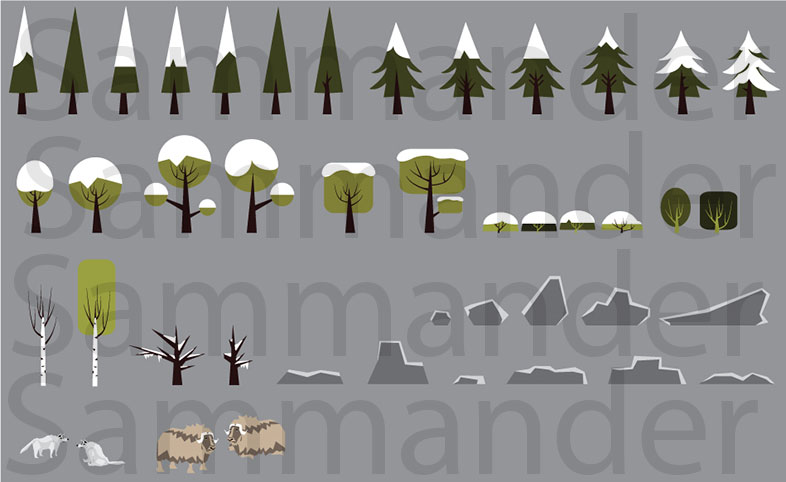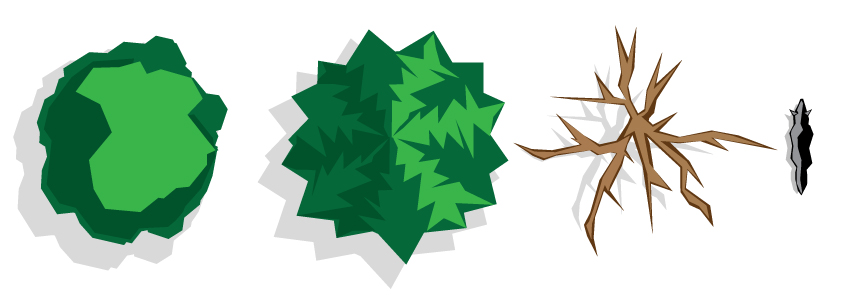I will be doing a general heuristic evaluation of the Backyard Monsters Facebook game against Paavilainen’s Social Games Heuristics. Backyard Monsters is a online strategy / tower defence game that allows players to build various forms of defensive and offensive strategies using a monster thematic in hopes of attracting players to work with or against their facebook friends. Using these said heuristics, I hope to be able to break down the game’s primary elements and evaluate the positive and negative aspects of the game against those heuristics.
1. Accessibility: Making the game easy to approach, understand, and play.
The amount of information that needs to be assimilated by the player early on can be extremely daunting, especially when there are so many different things to choose from in the game. To counteract this issue, the player is hand held throughout the beginning of the game and is told exactly what to do until they have eventually survived an attack and have been able to build up enough defensive measures as well as resource producing systems.
Even after the initial walk through, the system continues to pay attention to how the players manages their resources and will even give hints much later on in the game if they are letting something sit idle and what they should do to correct their mistake. This happened to me about four hours into the game where I had left my monster locker sitting idle and not producing a monster, where as if I had known earlier, I could have had several new monster types already ready to be created. During this time, the system eventually warned me of my problem and told me that I should take advantage of this and what I should do.
From a graphics standpoint the screen can get very crowded and the strange art style can be confusing to look at, at times. Fortunately by clicking on the objects a description is given, and also more info is given in the various sub menus of the game system.
Interactively, everything is done with only single left mouse clicks which makes it easily approachable for most people.
2. Interruptability: Taking advantage of asynchronous, spontaneous and irregular play sessions.
The system time and the real world time are synced. Therefore, if it says it will take one hour to build an item then it literally takes one full hour to build that item. This is where the game uses time as one form of monetization in that the players can speed up time by using “shiny” (which may be purchased with real money) to buy items that speed up time, or to purchase other items that may give them other abilities. Game time is always moving so the players can at any time close their browser and come back the next day and time would have moved forward that similar amount. This gives the players the ability to set a task and then go do something else and return when the task is completed. This flexibility allows the players to play in any style or fashion as they like, but if they want to play the game quickly and continue playing, they are very likely to have to spend real world money.
3. Continuity: Providing asynchronous and permanent game world which attracts the player to come back.
This is addressed in question 2.
4. Discovery: Providing new experiences, content, and surprises.
The game has many elements that offer the players some spice to their gameplay. Most of these lie in random or attacks by other players, or things that are found or received as gifts from other players. There are also many different creature types and items that can eventually be used.
5. Virality: Supporting viral growth in the player’s social network.
The game rewards players with shiny by getting their Facebook friends (and others via email) to also begin playing the game as well. It also allows friends to help each other decrease the time it takes to build objects as well as give gifts to each other, thus allowing the game to spread and be played by many people. It also shows the top playing friends at the bottom of the player’s screen where he or she can quickly go to visit his or her backyard, thus increasing chances of competition.
6. Narrativity: Creating in-game and off-game narratives that elicit curiosity
I would say that there is a narrative element in the game which has monsters pitted in fights against each other but I would l say that it is very lose and the a totally different thematic could be pasted in place of it without much effect. Off-game I could say it is up to the players to either make up their own stories where they may fight each other or team up to attack or defend against other players.
7. Expression: Supporting self-discovery, customization and virtual spaces.
One of the key strengths of the game is that it allows the character freedom to choose how they want to build their backyard. They can play defensively, offensively, a mix, and they can pretty much create any type of layout that they like. They can even decorate their backyard with items that are purely just for decoration. It is kind of like building your own self contained world that you can move buildings around as you please within the limits of the game world and your resources / shiny.
8. Sharing: Collaborating with friends by gifting and boosting.
As mentioned earlier, this is friends can work together by giving gifts to each other as well as helping to decrease build time of objects. They also are able to team up together so they in a sense build a community.
9. Sociability: Supporting sociability among friends in the game dynamics.
Again this was addressed earlier as it allows for friends to help each other via communicating to help each other with the various aspect of the game, from attacking, defending, upgrading, gifting, etc.
10. Competition: Promoting playful social competition with others.
The bar that is at the bottom of the screen shows the ranking of the player’s various friends and the world map also shows their location. All of these tempt the player to either temporary help or attack the other players in hopes to take they might take the top rank.
Conclusion:
Overall the game Backyard Monsters has a decent game mechanic with enough social elements that it can be worthwhile to play at least for a short time. I believe that it is successful because it contains enough of Paavilainen’s heuristics. I do not know however, how long I will continue playing it. I would say for example, what is the incentive or motivation for people that lose the game to continue to play? Several of the people on my list had destroyed backyards, and I believe they just stopped playing because they did not want to start completely from scratch again. So they took their time and money elsewhere.


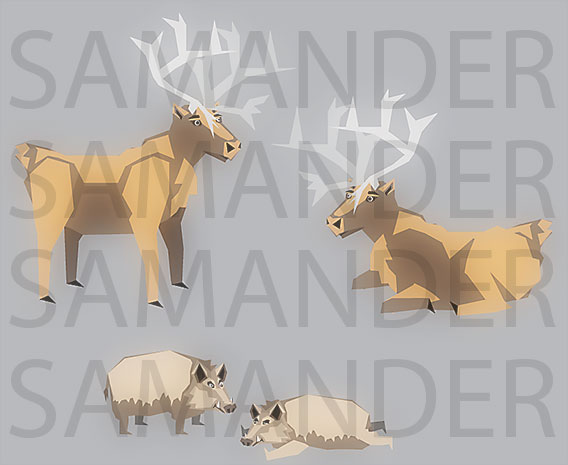
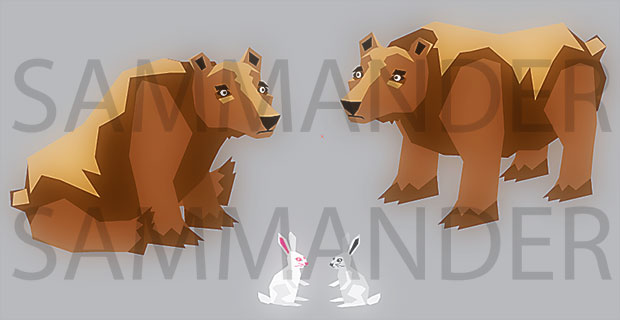
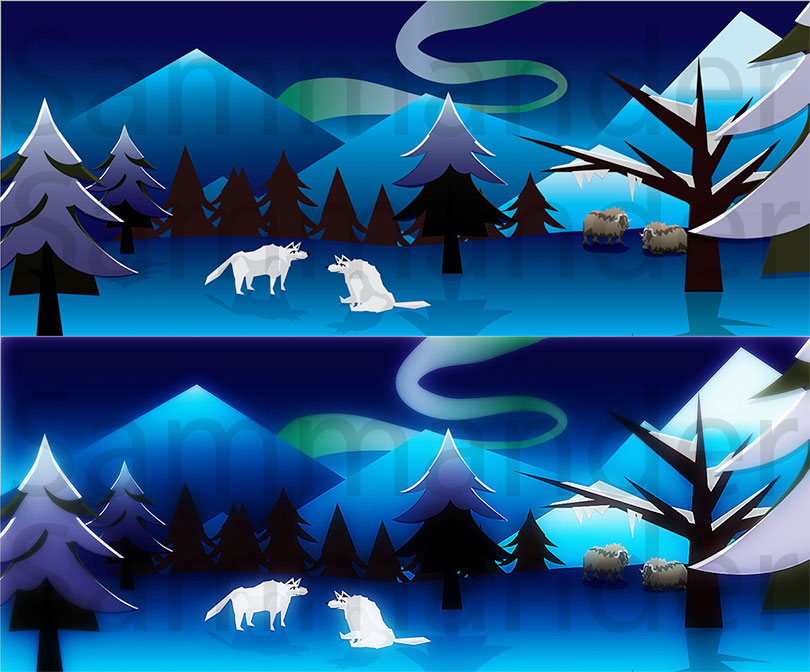 After a few attempts I was able to compose a scene of how I though the game would (or should :)) look like. The initial image was very much the flat style I was looking for but I felt it needed a little “oomph” so took that into photoshop and played around a little to try and emulate some glow and blur effects to add a little depth. I hope we are able to achieve something in this direction with Unity 3D, or at least something close. Probably with some Pro effects or other shaders. Let’s hope!
After a few attempts I was able to compose a scene of how I though the game would (or should :)) look like. The initial image was very much the flat style I was looking for but I felt it needed a little “oomph” so took that into photoshop and played around a little to try and emulate some glow and blur effects to add a little depth. I hope we are able to achieve something in this direction with Unity 3D, or at least something close. Probably with some Pro effects or other shaders. Let’s hope!